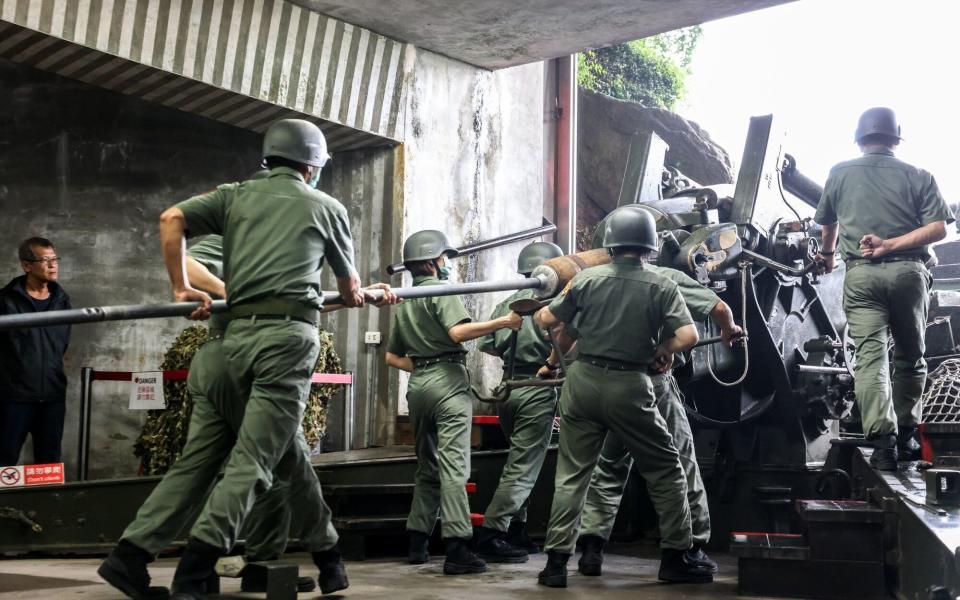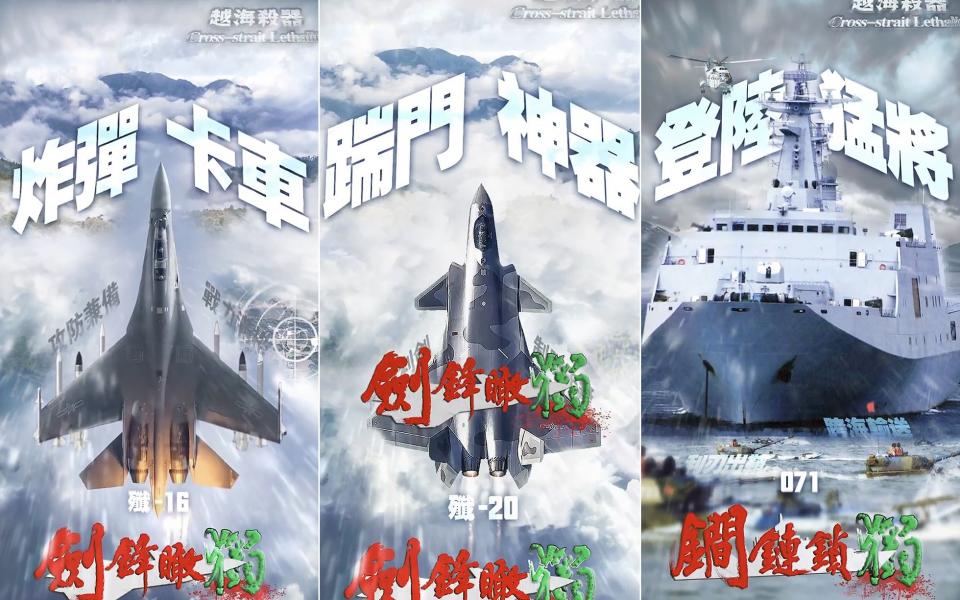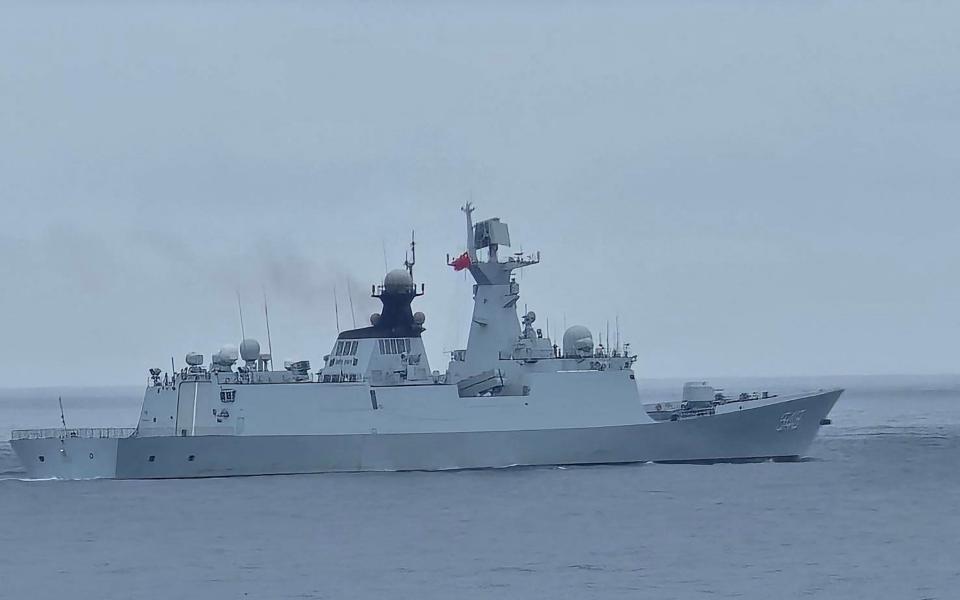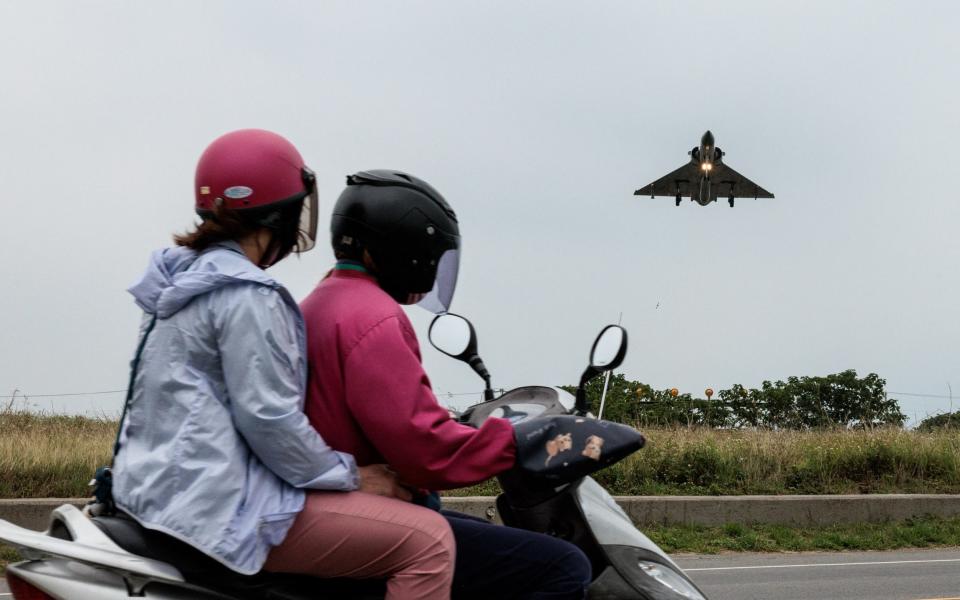‘I’ll man front line’, says Taiwan leader as China simulates attack
Lai Ching-te, Taiwan’s new president, has said he will “stand on the front lines” to defend his island country after China surrounded it with surprise military drills.
The “punishment” air and sea manoeuvres are simulating direct attacks on the territory for an invasion, something Beijing has threatened for years.
Speaking at a military base after the war games began, Mr Lai said: “I will stand on the front line with our brothers and sisters in the military to jointly defend national security.
“Faced with external challenges and threats, we will continue to defend the values of freedom and democracy, and safeguard peace and stability in the region.”
Mr Lai, a moderate labelled a “separatist” by China, took power this week. At his inauguration he warned China against further military intimidation and said: “Peace is the only option.”

The Chinese military exercises began without warning early on Thursday morning, and involved aircraft and ships surrounding the island to “test” their combat capabilities, according to the People’s Liberation Army (PLA) of China.
Experts said the drills simulated a full-scale attack on Taiwan for the first time, rather than just a blockade, as in similar exercises in 2022. The previous exercises also came with advance warning.
Launching the drills abruptly, the PLA put out a series of posters touting what it called its “cross-strait lethality”.
These featured missiles, jets and boats next to blood-stained text, declaring: “The weapon aimed at ‘Taiwan independence’ to kill ‘independence’ is already in place.”
The Chinese Communist Party, which claims Taiwan as its own despite never ruling there, has refused to renounce seizing the island by force. It has ignored Mr Lai’s repeated invitations to talks.

The drills are an early test for the Lai presidency, although Taiwan has long been subjected to sustained Chinese military and economic coercion tactics.
In a defining speech on Monday setting the tone for his administration, Mr Lai told China to cease military and political intimidation of his country and respect its democracy.
Taiwan’s defence ministry condemned the drills as “irrational provocation that has jeopardised regional peace and stability” and said it had put its forces on alert to protect its territory.
In a statement, the ministry urged citizens to “stand united” and added: “We seek no conflicts, but we will not shy away from one. We have the capacity, determination and confidence to safeguard our national security.”
The PLA said the drills serve as “strong punishment for the separatist acts of ‘Taiwan independence’ forces” and as a warning against “interference”, in reference to Western support for Taiwan.
Mr Lai, of the Democratic Progressive Party, was elected in January in a poll that Beijing portrayed as a choice between war and peace.

Officials in Taipei had indicated they were preparing for new Chinese military movements around the time of the inauguration.
In Aug 2022, China launched larger four-day live-fire exercises after it was angered by a visit to the island by Nancy Pelosi, the former US House speaker.
A military expert told Chinese state TV that the drills were partly intended as a rehearsal of an economic blockade of the island.
Zhang Chi, a professor at China National Defence University in Beijing, said the drills aimed to “strangle” Taiwan’s critical Kaohsiung port and “severely impact” its foreign trade.
They would cut off “Taiwan’s lifeline of energy imports” as well as “block the support lines that some US allies provide to ‘Taiwan independence’ forces”, he added.

Analysts, regional diplomats and senior Taiwanese officials said the drills were widely anticipated by Taiwan and overseas. They included mock air and sea strikes around the fortified Taiwanese islands of Kinmen and Matsu, close to the Chinese coast.
Wen-Ti Sung, a fellow at the Atlantic Council’s Global China Hub in Taipei, said: “Beijing is showing muscle in the immediate wake of Lai’s presidential inauguration to signal Beijing’s displeasure and shape international understanding of Beijing’s narrative about Lai.”
He added: “But this is just the ‘signal’. The real ‘punishment’ may be yet to come.”
A senior Taiwanese military official said the drills so far appeared to be repeats of other operations, involving provocatively crossing the so-called median line of the Taiwan Strait and mock attacks on vessels close to Taiwan’s 24-mile contiguous zone.

 Yahoo News
Yahoo News 
